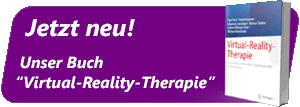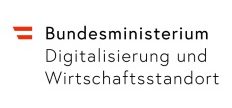Virtual reality exposure in the treatment of phobias
VR Coach GmbH, Austria
Summary
VRET is an effective approach in the treatment of phobia patients. The anxiety stimulus can be exposed under controlled conditions in a gradual and repeated manner and thereby habituated. VR-programmes with sufficient quality and thus sufficient patient acceptance have been limited to clinics and centers due to high developmental costs.
In this work we show, how sophisticated VR-solutions can be made accessable to all psychologists and psychotherapists, and we propose a five-steps-protocol to be used in phobia patients. We see computer-generated images as a prospective gold standard for phobia treatment and 360° videos as a meaningful supplement of VRET for relaxation response.
Introduction
Anxiety disorders are among the most common mental disorders. A meta-analysis of the worldwide prevalence and incidence of anxiety disorders comes to a mean 1-year prevalence of 10.6% for all anxiety disorders. Social phobia (4.5%) and specific phobias (3.0%) are the dominant forms [Bandelow, 2001; Wancata et al., 2011; Bandelow et al. 2015; Boeldt et al. 2019]. Social phobia is characterised by inappropriate, often chronic fear and avoidance of social situations in which the person affected could be exposed to interpersonal assessment. In addition, there is the fear of performance-related failure, social shame and humiliation. Common to the specific phobias is the irrational fear of certain situations or objects, which leads to avoidance behaviour and thus to an attempt to control the circumscribed fear. Frequently, phobic disorders occur in relation to animals, confined spaces, heights, airplanes, dangerous objects, blood, physical injuries, medical utensils or medical locations. Neurobiologically, hyperactivity of the central nucleus of the amygdala can be observed. The level of suffering associated with phobias can vary greatly depending on its severity and the situation that triggers it [Bandelow, 2001; Bandelow et al. 2015].
In psychological or psychotherapeutic practice, the focus is on exposure or confrontation therapy. This is considered to be the most effective method of gradually establishing a habit in response to the fear stimulus and thus enabling normal handling of these situations [Shiban, 2018].
For some years now, this form of therapy has also been explored with the help of virtual reality or virtual realities, and has been summarised as Virtual Reality Exposure Therapy (VRET). Computer-generated immersive 3D rooms or 360-degree videos are used in which patients are confronted with fear-inducing situations or objects. In some cases, patients can move virtually through these rooms and interact with the environment. The degree of confrontation can be controlled by patients and therapists. Accompanying interventions such as relaxation exercises or conversations complement VRET [Shiban, 2018; Boeldt et al., 2019].
In this presented paper, the studies regarding the effectiveness and acceptance of VRET is discussed. A VRET protocol based on two training courses is proposed, which to our knowledge also discusses the application of 360° images for the first time. An outlook on the latest developments in VRET is given, with which Virtual Reality programmes can be used widely and cost-effectively.
Comparison of effectiveness and treatment adherence with VRET
Exposure therapy in relation to anxiety disorders is based on strong evidence from studies. It is also based on gradual and repeated exposure with the appropriate anxiety stimuli. In practice, it is often difficult to implement. With imagination techniques, the therapist cannot know precisely what the patient is imagining, nor can he or she control it exactly. The ability to create vivid mental images is not the same for everyone and also decreases with age. The in vivo exposure, on the other hand, is often difficult and can only be arranged with great effort, for example, if the fear of heights is to be habituated at actual heights under therapeutic guidance. In addition, the drop-out of patients is an issue for these approaches, as this type of intervention is experienced as stressful and unpleasant [Boeldt et al., 2019].
By means of VRET these barriers and problems can be avoided or at least reduced. On the one hand, VR can involve people mentally and emotionally, but it can also provide a controllable, repeatable and safe environment for therapy. Findings from neuroscience show that VR images strongly involve the primary visual cortex V1 and the visual working memory. Perception and imagination are based on comparable neural processes. The use of VR for specific phobias, such as those for heights or spiders has already been well researched in both random and controlled studies [Boeldt et al., 2019].
Carl et al. 2019 examined a total of 30 studies with 1057 participants, 14 of which dealt with specific phobias. The effect size for VRET versus the wait list control group was very high (g = 0.90), and medium to high for VRET versus psychological placebo control groups (g = 0.78). A comparison between VRET and in vivo therapies showed no significance in effect size. The findings were consistent for all forms of anxiety disorders studied and suggest that VRET is an effective intervention for anxiety disorders [Carl et al., 2019].
In 2018, Benbow and Anderson published a meta-analysis in which the probability of drop-outs by patients was determined [Benbow & Anderson, 2019]. More than 46 studies have shown a value of 84% for treatment compliance. The drop-out rate of 16% is slightly lower than the drop-out rates of 19.6% and 19.7% for in vivo interventions and cognitive behavioural therapy for anxiety disorders [Swift & Greenberg, 2012; Fernandez et al. 2015; Benbow & Anderson, 2019]. The reasons for discontinuing therapy were different in VR versus in vivo. In VR, the reasons were lack of immersiveness, cybersickness, viewing complications and discomfort in viewing and talking to the therapist simultaneously. The main reason for in vivo therapy was the fear of exposure to the actual anxiety-inducing stimulus [Swift & Greenberg, 2012; Fernandez et al. 2015; Benbow & Anderson, 2019].
The results of these two meta-analyses correspond to the studies of Fodor et al. 2018 on anxiety disorders and depression. The authors included 39 studies and were able to show a high effect strength of g = 0.79, 95% CI 0.57 to 1.07 in anxiety disorders. VR has a high efficacy compared to control groups, but due to pronounced heterogeneity, no clear effect on the drop-out rate was noticeable [Fodor et al., 2018].
Already in 2012, Opris et al. had already summarised the results of VRET studies on anxiety disorders and found that VRET had far better results than wait list control groups, the results show a similar effectiveness between behavioural and cognitive behavioural interventions, VRET has powerful real effects similar to classic evidence-based treatments, VRET has a good stability of results over time and thus a sustained effect, there is a dose-effect relation for VRET and therefore intensive programmes lead to faster results and there is no difference in the drop-out rate between virtual reality exposure and in vivo exposure [Opris et al. , 2012].
Protocol for VRET
We conducted two training courses in 2019 with clinical psychologists and psychotherapists in Graz and Vienna, among others, during which VR programmes were created using 8k recordings with an Insta 360° Pro camera.
Some of the participants of the training course treat patients with social phobia in their practice, who hardly dare to socialise with people. A programme in a park was developed for these clients. At first you are alone on a park bench. Gradually other people (the participants) join in and thus increase the perception of human closeness. By means of a controller, the patient can stop the steadily increasing challenge at any time.
The topics of exam anxiety and speaking in front of an audience are also frequent reasons why a practice is visited by participants. For this reason, the group simulated a seminar audience or, subsequently, an examination board itself.
All three scenarios, the park bench, the presentation and the examination are available to patients through an Oculus GO 32GB VR goggle. The graduates can learn to handle these situations confidently and safely in a realistic atmosphere created by the 360° shots, however, this access does not offer any interactivity.
Moreover, additional interventions are practised with which the VR programmes can be combined. For example, resources such as energy/power providing locations that have been activated by a VR application can be tracked down and expanded again and again. Or relaxation scenes such as calming natural scenery can be used to support a client in the context of VRET.
A special challenge in the application of such programmes is that some patients cannot even stand the realistic VR scenarios at the beginning. The great strength of VR is the realistic experience, but this can be a hurdle for people with a high level of suffering at first. If this experience is too stressful, it is necessary to rely on attenuated forms of perception in the beginning.
Step 1: The client remains distant from the relevant situations, while still easily confronting them. This can be achieved, for example, by means of pictures or videos without fear stimuli. On search engines, pictures and videos can be found on practically any topic with just a few clicks. For this purpose, one can work with a laptop or a tablet. Pictures can also be prepared in printed form. The reaction of most clients will probably be that they have no problem with this light form of confrontation.
Step 2: The client still remains distant from the relevant situations. But in this step the client, with eyes closed, tries to use his/her imagination to visit certain places where the fear-inducing situations are not far away. For example, the building across the street where a test is being held or where there is a lift. Or a football field that you have to leave soon, where you have to walk through a narrow tunnel further ahead. Or a deserted park that you will soon have to leave towards the city centre.
Step 3: Now, for the first time, the client tries an easier form of association with the fear-inducing situation through his imagination. He enters the building in his mind and gets into the lift. He enters the room and begins his lecture or welcomes the examination committee. Or imaginatively leaves an empty space and seeks the proximity of other people.
Step 4: In the penultimate step, the client enters a strong form of associated perception through the VR scenario. Before step 4 is possible, some clients need several appointments to go through steps 1 – 3.
Step 5: In reality, the client enters a (formerly) fear-triggering situation. Depending on the feedback, step 4 is repeated several times.
Accompanying this slow increase in perception, a physical relaxation exercise can be supportive for the client as soon as the client reports symptoms of tension or if they become visible without any feedback. Initial application reports from participants with their patients indicate the effectiveness and acceptance of this strategy. This VRET protocol was tested on 360° videos, but can be used without adaptation for computer-generated rooms.
Discussion
The effect strength for VRET interventions compared to controls is very high. VR can therefore be classified as a very effective approach in the treatment of phobias. The drop-out rate is low at 16%, but no significance to in vivo therapies could be found. Since “real exposure” is associated with great fear on the part of patients and leads to therapy discontinuation in this case, VRET has great potential for even greater patient acceptance.
The advantages of VRET are: It is low-threshold, cost-effective, can be performed as often as is required (e.g. take-off of an airplane) and the patient has full control over the scene. Lack of immersion, cybersickness, complications of viewing and discomfort of viewing and talking to the therapist at the same time are the most common limitations that lead to the intrinsically low rate of terminations. The drop-outs show that VRET benefits from VR programmes of correspondingly high quality, where the aforementioned advantages can actually be used accordingly. For the best possible immersion, computer-generated rooms with position tracking are advisable, as one moves interactively in these rooms. In order to prevent cybersickness as well as discomfort while viewing, the principle of minimising stimuli applies – i.e. scenarios designed as simply as possible.
As part of two training courses, psychologists and psychotherapists have created VRET scenarios by means of video shooting, the degree of exposure to which is gradually increasing. The reports of the course participants with this protocol indicate that this procedure can be combined with satisfactory effectiveness with patient acceptance, with reductions in immersion. A clinical study could evaluate this experience more closely and increase the evidence base to use such videos in isolated cases as a cost-effective alternative to computer-generated rooms.
It is also recommended to offer relaxation exercises during the phobia treatment. Relaxation programmes can be used via VR. The use of VR in relaxation could lead patients to associate VR not only with the negative stimulus, which could have a positive effect on acceptance. Furthermore, VR is a very effective tool for rapid physiological recovery from stress stimuli, as a measurement of heart rate variability and pulse at the University of Salzburg has shown (Täuber M. & Altenhofer M., manuscript in preparation).
We recommend starting with one to three hours after the above five-step protocol and supplementing this with relaxation strategies. It is important to start by building up sufficient trust and rapport. Furthermore, we recommend using VRET of a correspondingly high quality, allowing patients to immerse themselves, step by step, in virtual realities. Especially in the psychological context of virtual reality, the principle “less is more” often applies – in order not to overtax patients.
Although this work focuses on phobias, the benefits in generalised anxiety disorders and panic attacks should not go unmentioned. Relaxation programmes can effectively put the autonomic nervous system into a recovery mode. Natural scenery such as woods & meadows, water or far reaching views – assuming no negative experiences and fears – can produce relaxation with simultaneous alertness via the “soft fascination effect” [Täuber, 2020]. We recommend natural backdrops with real but largely static 360° motifs.
Until now, VR has been primarily reserved for pioneers who had these programmes created for their own company or practice centre, either at a high investment cost or with low quality, and used them internally for their own purposes. While the necessary hardware is extremely inexpensive, an Oculus Go is available from around €150, the development of VR programmes requires own software solutions, a computer with a correspondingly high performance and a corresponding amount of work from specialists. In Germany, VRET has been and is already offered in clinics, for example for vertigo and arachnophobia, but these programmes are not available for psychologists and psychotherapists in their own practice.
Firstly, the increased use of VRET has financial hurdles. One option, as described in the two courses, is to create and use videos oneself. However, we consider it desirable for both computer-generated immersive 3D rooms (primarily for phobia treatment) and 360-degree videos (primarily for relaxation) to be accessible to psychologists and psychotherapists at a low cost and low threshold in the form of content stocks or rental models. With VR Coach GmbH we are pursuing this strategy, so that VR programmes of high quality with low investment can be increasingly used. The vision: to establish VRET as the new gold standard in the therapy of phobias due to its simple practicability and high effectiveness.
Literature
Bandelow B.: Panik und Agoraphobie. Diagnose, Ursachen, Behandlung. Springer, Wien, New York 2001.
Bandelow B, Michaelis S: Epidemiology of anxiety disorders in the 21st century. Dialogues Clin Neurosci 2015; 17:327–35.
Benbow AA, Anderson PL: A meta-analytic examination of attrition in virtual reality exposure therapy for anxiety disorders. J Anxiety Disord 2019; 61:18–26.
Boeldt D, McMahon E, McFaul M, Greenleaf W: Using Virtual Reality Exposure Therapy to Enhance Treatment of Anxiety Disorders: Identifying Areas of Clinical Adoption and Potential Obstacles. Front Psychiatry 2019; 10:773.
Carl E, Stein AT, Levihn-Coon A, Pogue JR, Rothbaum B, Emmelkamp P, Asmundson GJG, Carlbring P, Powers MB: Virtual reality exposure therapy for anxiety and related disorders: A meta-analysis of randomized controlled trials. J Anxiety Disord. 2019; 61:27-36.
Fernandez E, Salem D, Swift J K, Ramtahal N: Meta-analysis of dropout from cognitive behavioral therapy: Magnitude, timing, and moderators. Journal of Consulting and Clinical Psychology 2015; 83:1108–1122.
Fodor LA, Coteţ CD, Cuijpers P, Szamoskozi Ș, David D, Cristea IA: The effectiveness of virtual reality based interventions for symptoms of anxiety and depression: A meta-analysis. Sci Rep 2018; 8:10323.
Opriş D, Pintea S, García-Palacios A, Botella C, Szamosközi Ş, David D: Virtual reality exposure therapy in anxiety disorders: a quantitative meta-analysis. Depress Anxiety 2012; 29:85-93.
Shiban Y: Virtuelle Expositionstherapie bei Angststörungen. Der Nervenarzt 2018; 11.
Swift JK, Greenberg RP: Premature discontinuation in adult psychotherapy: a meta-analysis. J Consult Clin Psychol. 2012; 80: 547–559.
Täuber M: Gedanken als Medizin. Goldegg, Berlin/Wien, 2020.
Täuber M & Altenhofer M: Rasche Erholung nach sozialem Stress durch Virtual-Reality-Naturkulissen. Manuskript in Vorbereitung.
Wancata J, Freidl M, Fabrian F: Epidemiologie der Angststörungen. Journal für Neurologie, Neurochirurgie und Psychiatrie 2011; 12, 332-335.
Authors
Michael Altenhofer, VR Coach GmbH, email: info@vr-coach.at
Dr. Marcus Täuber, VR Coach Gmbh, eMail: info@vr-coach.at



